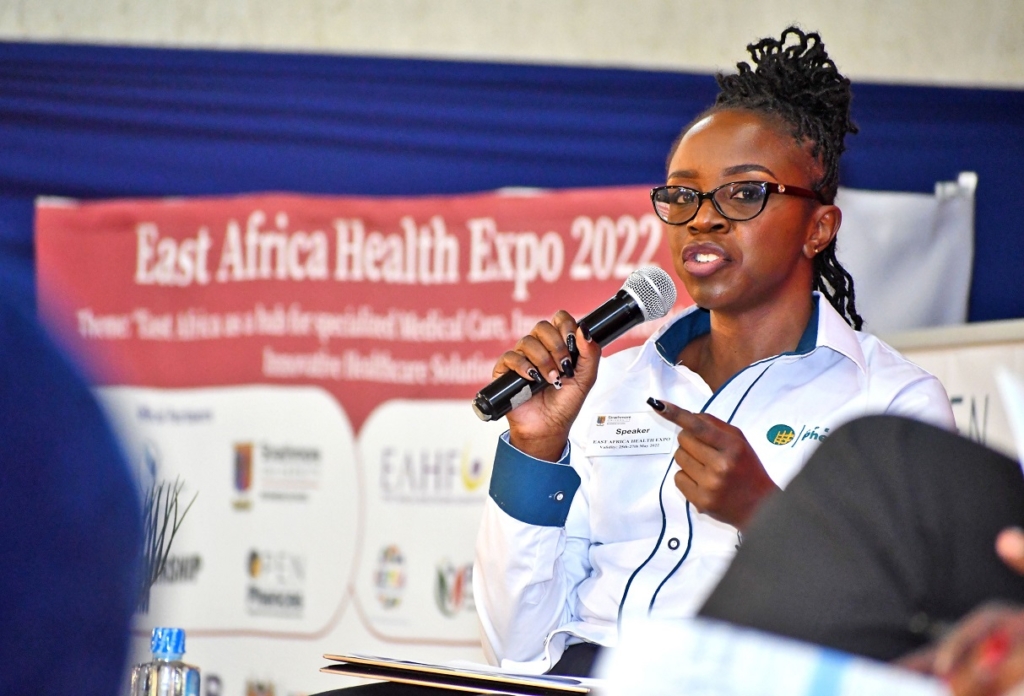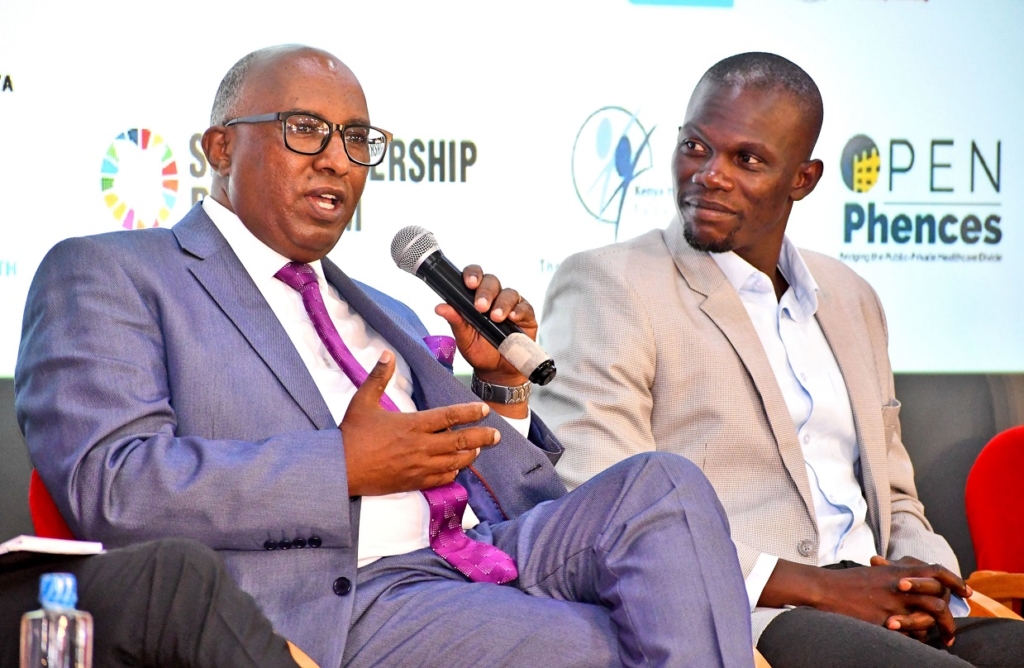Kenya, along with other United Nations member states, is working towards achieving Universal Health Coverage (UHC) by the year 2030. The World Health Organization defines UHC as the ‘ability for people to receive health services without suffering financial hardship.’ The Kenya Vision 2030 aims to transform Kenya into a middle-income country that provides better quality life to all its citizens. Good health promotes economic growth by boosting productivity and contributing to poverty reduction. Unfortunately, many Kenyan citizens are still struggling to access care due to the rising cost of medical services. Some private hospitals have raised their charges beyond the reach of ordinary citizens.
In Kenya, the provision of public health services was devolved in the 2010 constitution to the county governments. Challenges with timely budget releases have led to lack of essential provisions like drugs, equipment and medicines in the counties and rural areas. The bureaucracy of getting resources and translating them into quality services on time is crippling the system. The realization of the UHC goal will require government hospitals that are managed by County Governments to work efficiently.
During the East African Healthcare Expo held on May 25th-27th at Strathmore University, Professor Khama Rogo, a Healthcare Systems Specialist, asserted that for Kenya to achieve the Vision 2030 for healthcare, there must be reforms in the sector and that investments must translate into impact. “In this sector, we have not been shy about spending, but we have been poor in investment. Investment is not about money,” he said. Professor Rogo outlined a few key areas for the healthcare sector to focus on to ensure that maximum impact can be made during the eight-year countdown to 2030.
Commit to Efficiency
Devolution can be an engine for growth if it is made to work for the health sector. There is no accountability for the lack of value received from investments into the system. Investments that do not translate into impact and are not patient-centered are wasteful and will only compound the inefficiencies in the sector.
The delays in the release of budgets to the counties impede the ability of patients to access life-saving medications and access to essential services. Health sector governance must improve and this situation must be treated as an emergency as lives are lost due to bureaucracy.
Harness the Power of the Private Sector
Mission hospitals have long been providing a cushion for cash-strapped Kenyans as they are not for profit and have been offering this as a service by their sponsor faith-based organizations for decades. However, the government must treat them as partners and work with them to help solve the complex issues affecting the delivery of healthcare to all Kenyans.
Similarly, the private sector has long been viewed as too focused on profit-making and not involved in key conversations and collaborations that could help the ailing health sector. However, non-state actors have long been responsible for most of the innovations in healthcare. One of the objectives of the EA Health Expo was to bring together healthcare experts, academics, government actors, private sector actors, entrepreneurs, investors, and development partners to help create an ecosystem where innovations and investment that translates into impact can help transform healthcare in East Africa.
Professor Rogo dubbed the Upper Hill area in Nairobi as the ‘Silicon Valley of Healthcare,’ where virtually every building in the area has specialist doctors and high-tech imaging and other medical facilities. He raised the question of whether the government had ever had a meeting with these private stakeholders to address the gaps in healthcare service delivery.
The Exhibition at the EA Health Expo showcased an array of innovations, ranging from telemedicine to novel private sector healthcare models and technology pioneered by the vibrant private health sector in East Africa. In subsequent panel discussions, the role of public-private partnerships was explored.

Prof. Frank Wafula speaking at the East Africa Health Expo 2022.
Adopt a Leasing Model
It is imperative to scale up health infrastructure in Kenya to improve the delivery of public health services. The Medical Equipment Service (MES) project was initiated by the Jubilee Administration in 2013. The overarching objective of the project was to increase health infrastructure for specialized medical care in dialysis, basic and advanced surgery, emergency, maternal-child health, critical care, and imaging services. It was first conceptualized and approved as a private-public partnership but it was converted and implemented as a public project.
The project aimed at equipping hospitals with modern and specialized diagnostic kits. Specifically, the agreement was between the national government and county governments and six global medical firms which were contracted to supply, install, train people and offer maintenance and repairs of the diagnostic medical equipment.
Effective Priority Setting and Resource Allocation (PSRA) is essential to improving health system performance. Unfortunately, this is a factor that was overlooked at the inception of the MES project that adopted a ‘one size fits all’ approach when the equipment was allocated to individual counties. The project was not informed by a comprehensive health needs assessment as counties have varying needs and priorities. Some other issues and controversies have influenced public perception of the MES project.
According to Professor Rogo, the lease option is the best thing for the healthcare sector in Kenya. He stated that one of the outcomes of this project that is overlooked is the positive strides made in improving access to imaging services. “The only reason that imaging is successful and affordable in the county is that the public sector’s imaging facilities are working, which has forced the private sector to lower their prices. Public sector inefficiencies drive private sector prices, although there were issues with the implementation of the MES project and maintaining the contracts, we cannot throw away the baby with the bathwater. We have no business buying equipment that we cannot maintain, and which become obsolete as technology evolves. Better to use our money to lease the equipment,” he explained.
Digitalize the Sector
By moving away from paper-based storage and retrieval of medical information and embracing digital systems, the healthcare sector can unlock new opportunities to deliver better care and improve the processes and outcomes of health service delivery.
Public hospitals in Kenya are increasingly purchasing systems to support administrative services. However, there are many challenges posed by having sufficient capacity to ensure interoperability of systems within hospitals and other government services that are constrained by funding, low levels of user confidence in new technologies, and lack of data sharing policies and frameworks.
Use What You Have
Kenyans encounter a new construction site in Nairobi every few blocks. If Kenya wants to attain the goals outlined in Vision 2030 in eight years, there has to be a paradigm shift. The health sector must move away from investing in more ‘brick and mortar projects and start using the spaces it already has efficiently. Furthermore, there are cases where equipment is not used to its full capacity. Small changes such as introducing ‘shift working’ can help the sector to utilize resources more efficiently.
Leverage Available Human Resources
The devolution of health services in Kenya has been characterized by many challenges involving human resources such as strikes by health workers in different counties as well as the resignation of some workers. There is also an inequitable distribution of available health workforces as they migrate to areas within the country where there are better working conditions or migration to other countries. Kenya currently faces significant challenges in overcoming health worker shortages and low retention.
However, Kenya is unmatched in training laboratory workers, radiographers, nurses and doctors. There are medical training colleges around the country. For instance, there are nine schools of health sciences within a 50km radius in Kisumu, yet hospitals in that county are experiencing shortages and the quality of care does not reflect the fact that the area is a hub for medical training. The impact of medical training colleges around the country must be patient and healthcare outcomes-focused. The well-trained people in Kenya should be incentivized to stay and work in their counties. Part-time contracts could also build some flexibility in the system and allow medical professionals to spread their wings and thus address gaps in healthcare delivery.
Invest in NHIF
The Kenyan government decided to use the NHIF as one of the key strategies to scale up population coverage with a prepayment health financing system. It is incumbent upon the government of Kenya to expand coverage to the informal sector which accounts for up to 70% of the population. Membership in the NHIF is mandatory for formal sector workers who pay an income rated monthly contribution through statutory deductions. It is voluntary for informal sector workers who pay a flat rate directly to the NHIF. Of the 70 per cent of the population characterized by the informal sector, 40 per cent are indigent. If the State can sponsor indigent people, then the country can move closer to achieving UHC.
Although the journey to achieving Vision 2030 is fraught with many challenges, adopting an ecosystem approach and involving all stakeholders to help realize this vision will help the government achieve its target. However, if the investment does not translate into impact, the vision will remain a dream. Professor Rogo concluded his remarks with this statement, “This journey is not for the faint-hearted. You cannot lie in healthcare because disease knows how to catch up with you, so let us invest and not just spend.”
Article by Shailja Sharma, Executive Fellow and Coach.
This article first appeared on the Strathmore Business School website.









